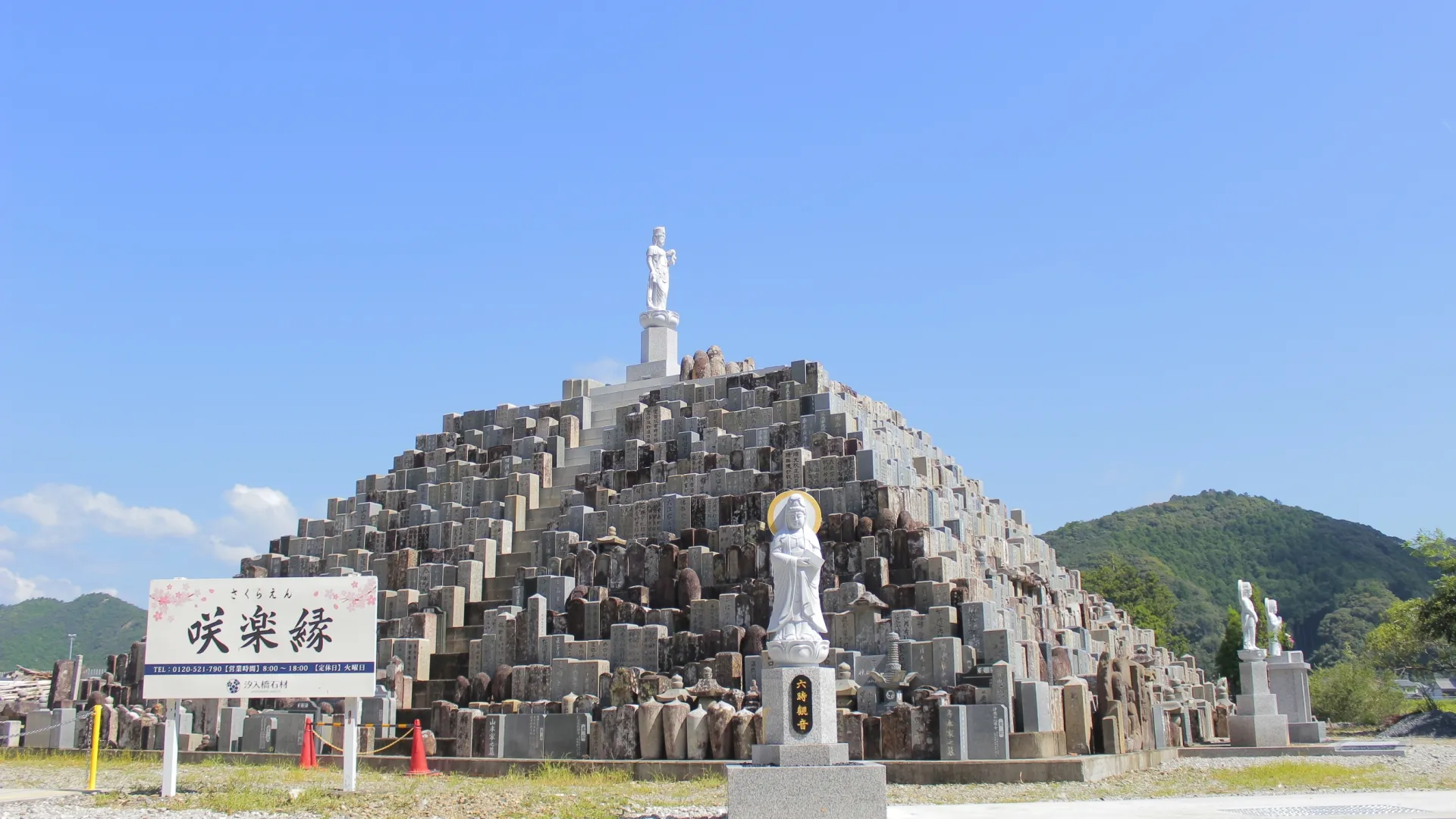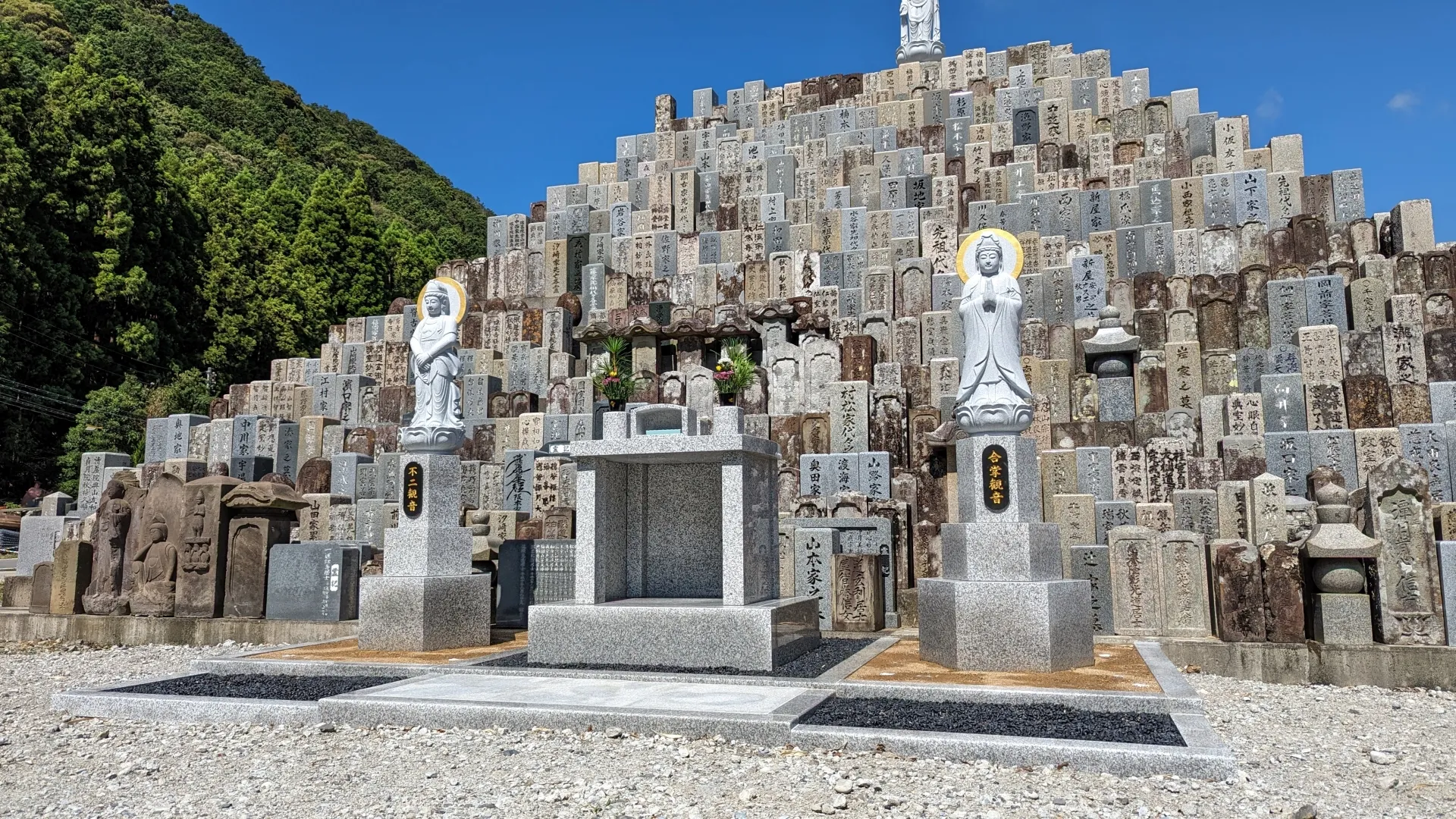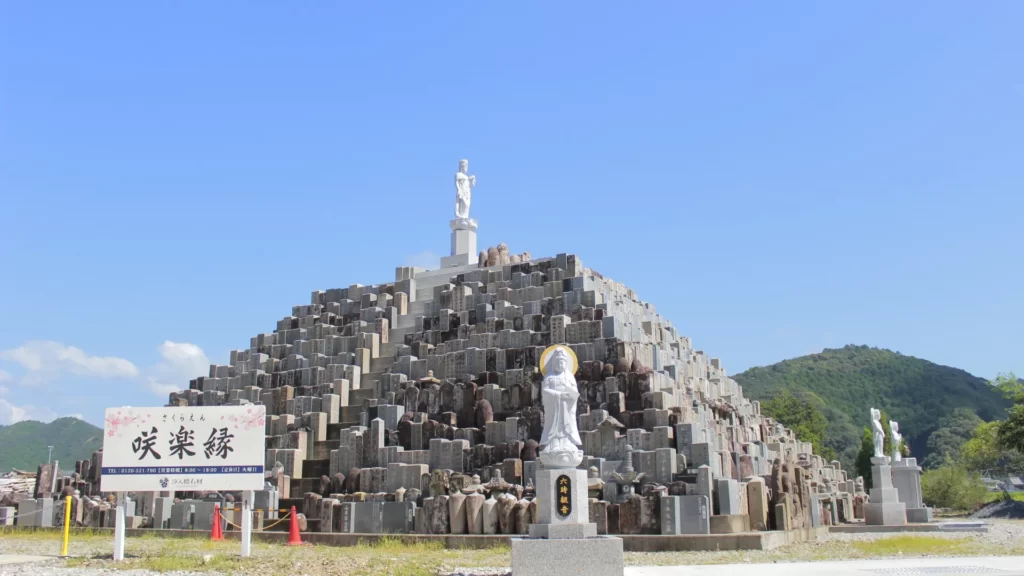
What is Sakuraen?
A power spot in Kumano.
Tourist spots in Kumano, Wakayama Prefecture.
“Sakuraen” is a power spot located in the spiritually-rich Kumano region, deeply connected with Shinto and Buddhist traditions.We have stacked grave markers in a pyramid shape.It is among the tallest in Japan.
Please feel free to stop by.
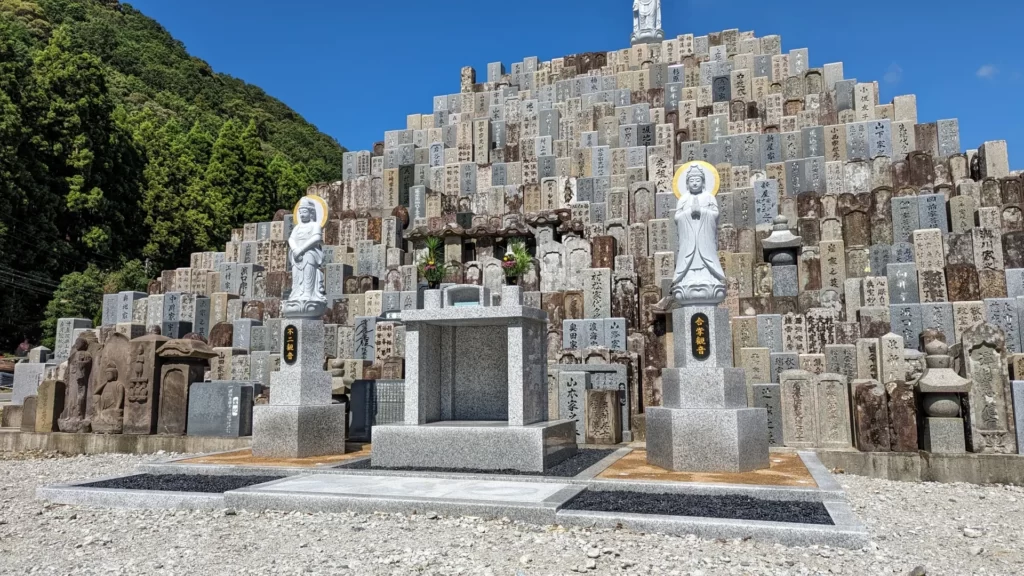
What are the stones gathered here?
“Sakuraen” protects what.
Conducting memorial services in Kumano, a land associated with Shinto and Buddhist deities.
These stones are known as “Hotokeishi” and, in Japanese Buddhism and Shintoism.
A grave marker(Hotokeishi) refers to the inscribed stone at the topmost part of graves built in Japan. In Japanese Buddhism and Shintoism, it is believed that this stone contains the human soul and energy.
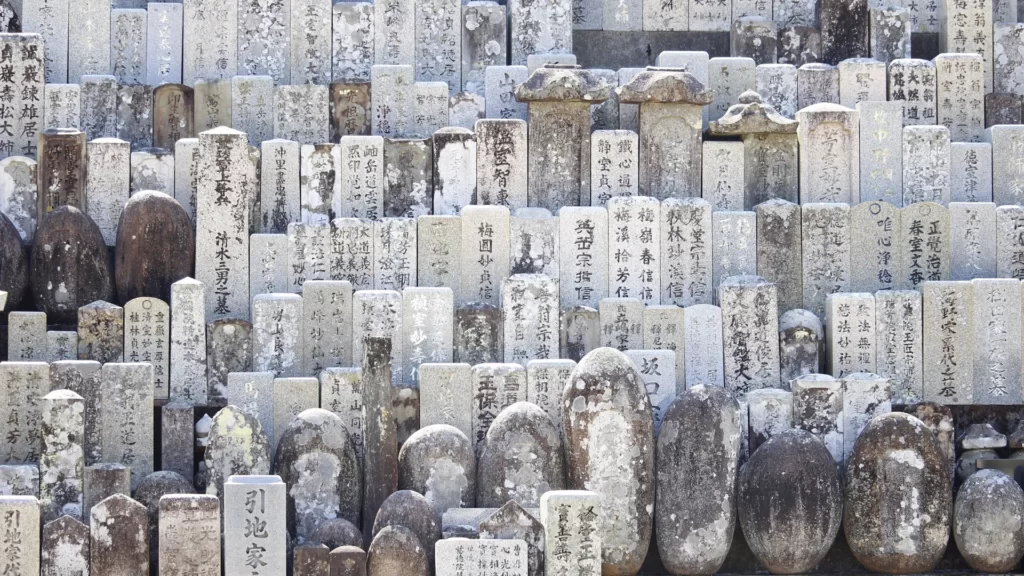
Why was Sakuraen built?
Recent treatment of grave marker(Hotokeishi).
When graves are dismantled, grave marker(Hotokeishi) used to be placed in temples’ memorial areas. However, in recent years, there has been a lack of space in temples to accommodate these stones. Consequently, there has been a rise in businesses that pulverize these Buddha stones. As a result, the crushed stones are increasingly being repurposed as materials for road construction.
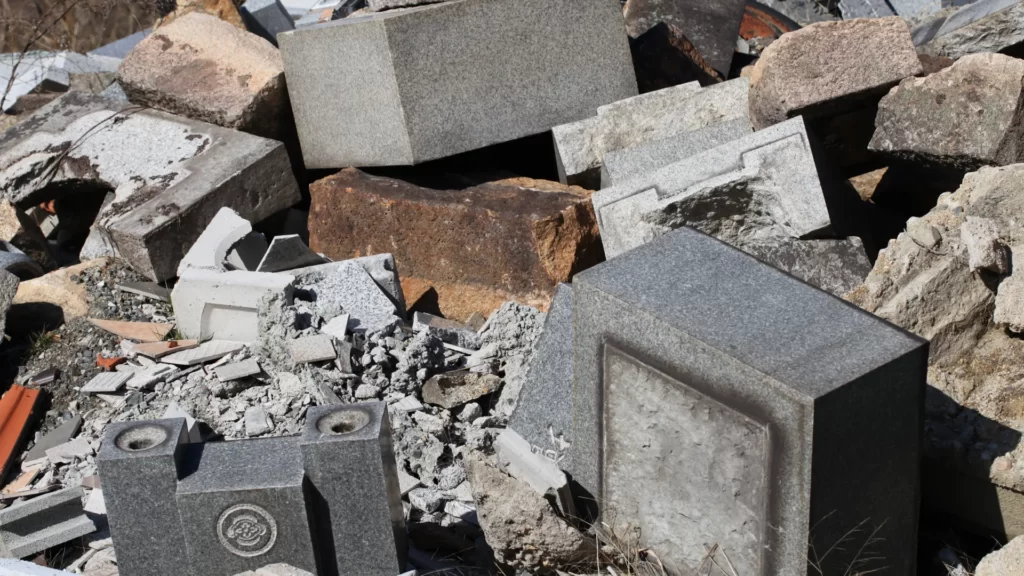
Temples do not wish to destroy or dispose of grave marker(Hotokeishi).
For temples, grave marker(Hotokeishi) is of great significance. Additionally, since it is believed that these stones embody human souls and energy, destroying them is not seen as desirable.
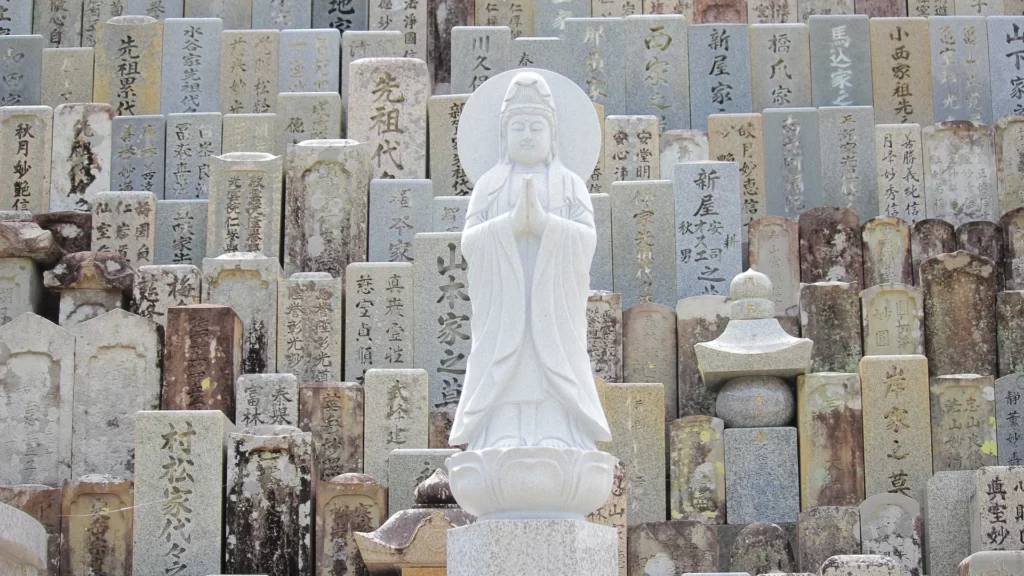
By constructing Sakuraen ourselves, we can provide the most meticulous and respectful memorial service.
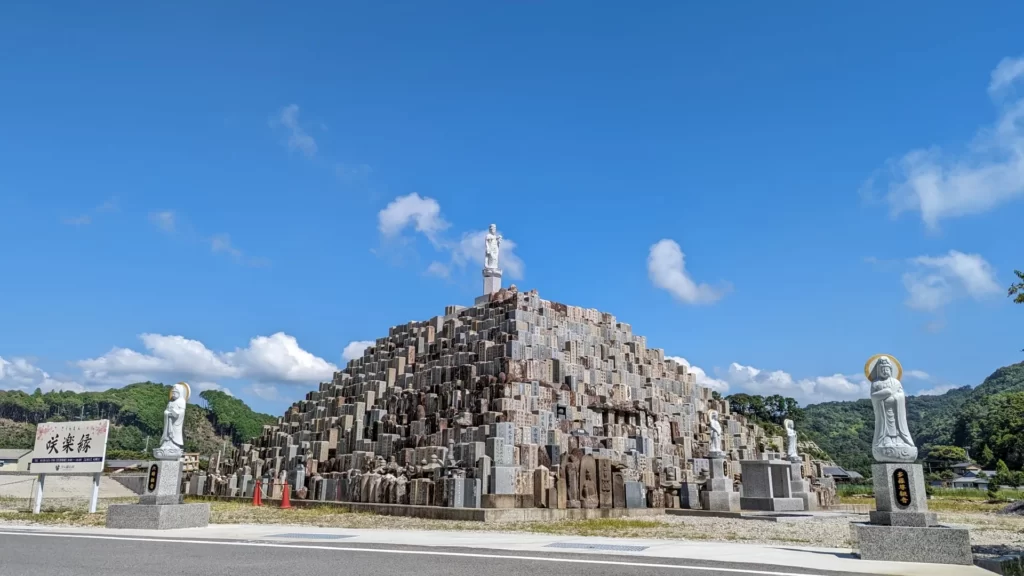
Why is it pyramid-shaped?
In Japan, there is a grave construction method called “Bosou-gaku,” and Sakuraen is built based on that. The direction, shape, and land development method of Sakuraen are all based on “Bosou-gaku.”
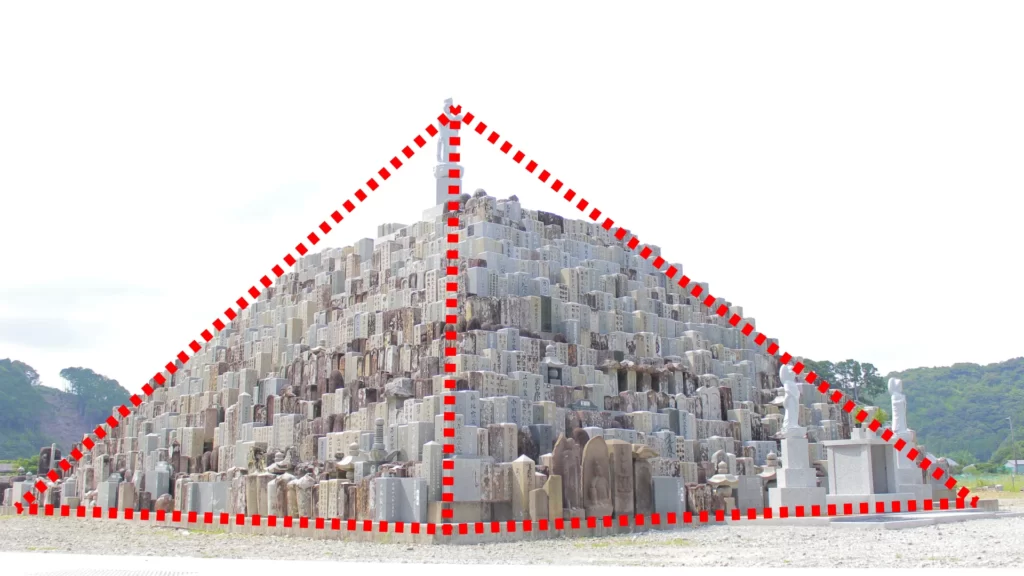
Sakuraen’s Buddhist memorial service
In March and September, a “Buddhist memorial service” is conducted by monks from the Daitaiji temple.
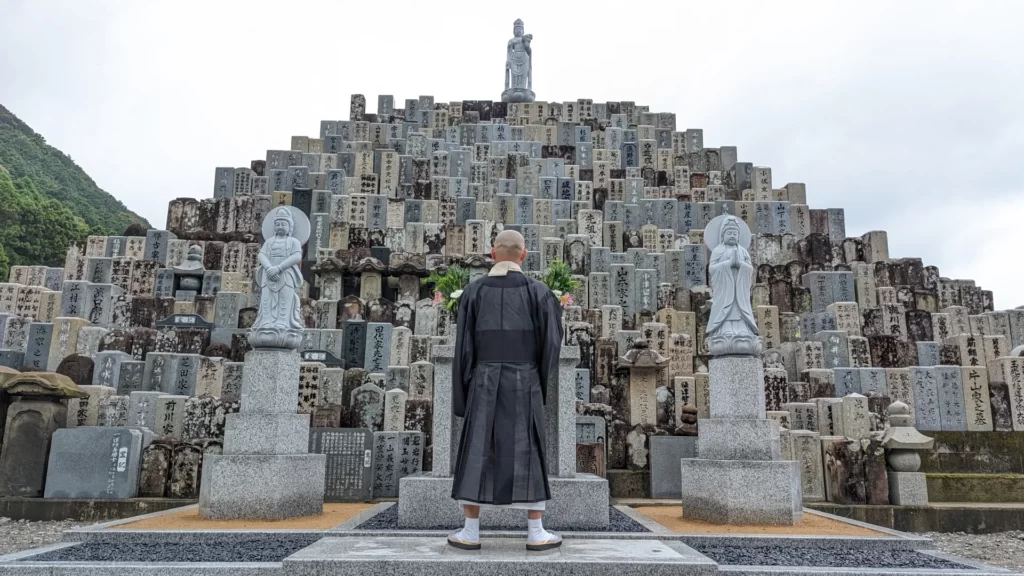
We are collecting grave marker(Hotokeishi) and Buddha statue from various regions across the country.
In 2022, we received a request from the Tokyo Metropolitan Government to collect a “Buddha statue.” This “Buddha statue” has a history of over 400 years. It is currently situated near the front of “Sakuraen,” so we invite you to come and see it.
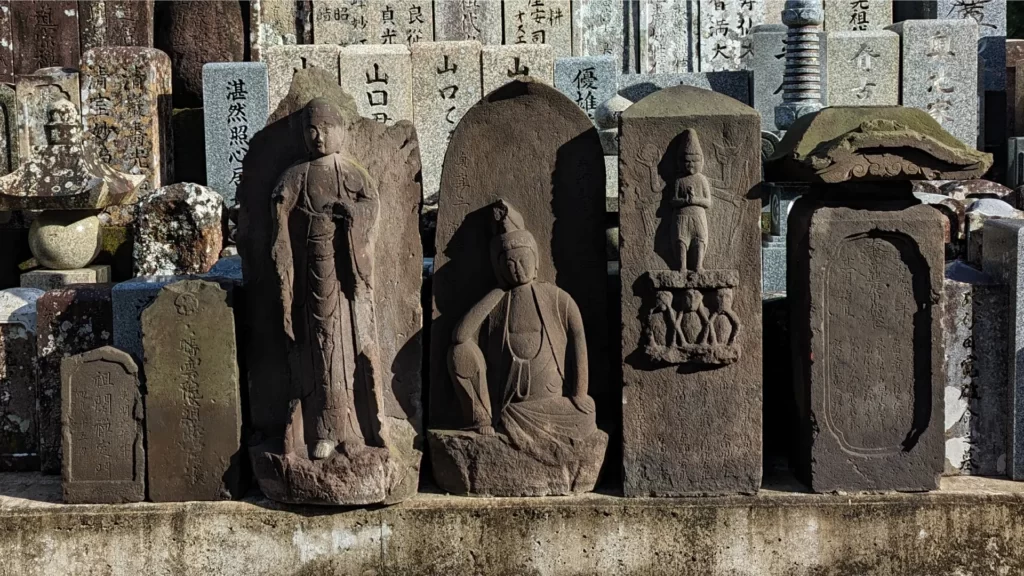
Kannon Deities at Sakuraen
Introducing five Kannon statues
Stone monument at Sakuraken.
Sacred Kannon Statue (Sho-Kannon)
Also referred to as Kannon Bodhisattva (Kannon Bosatsu in Japanese), this deity is believed to constantly observe people, swiftly coming to their aid upon hearing a cry for help. The name derives from this notion of always watching and listening. In Japan, the deity is widely revered. It is counted as one of the Six Kannons, believed to save people who are lost in the path to hell.
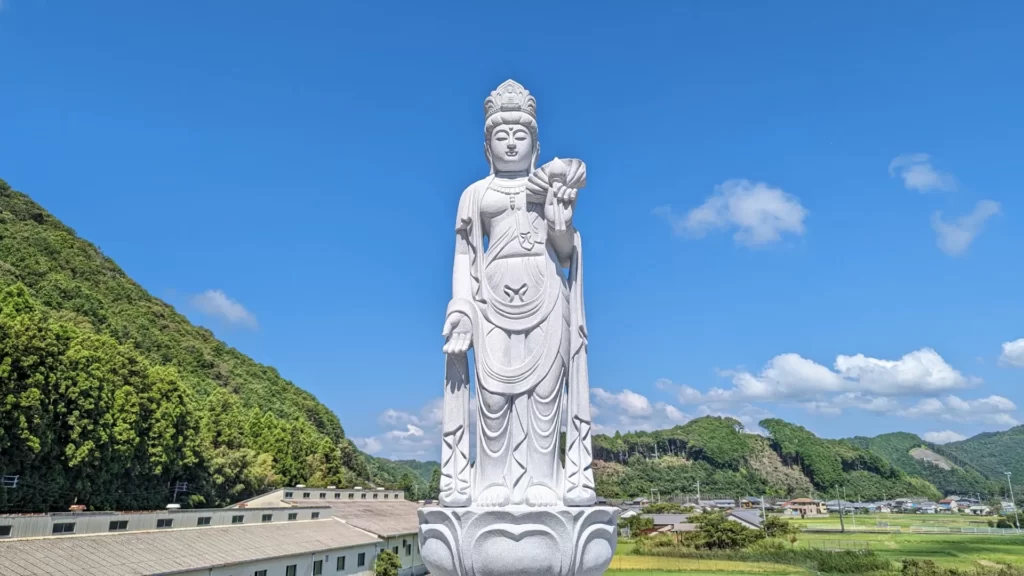
Rokuji Kannon Statue
“Rokuji” refers to the division of a day into six parts. Therefore, ‘Rokuji Kannon’ is the Kannon deity that protects everyone throughout the entire day.
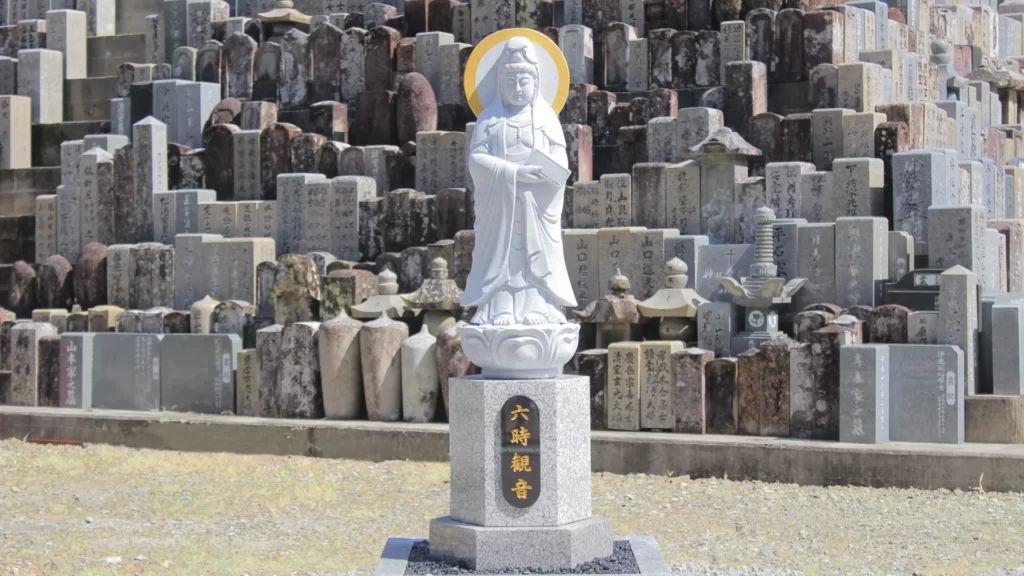
Tara Son Kannon
She stands above the clouds, with her right hand tucked inside her clothing below her chest and her left hand placed beneath it. She is revered as a compassionate mother deity. The name “Tara” signifies the pupil of the eye, and it can also be translated as “Mother of Salvation”. Like a loving mother, she rescues us from the sufferings of the worldly realm.
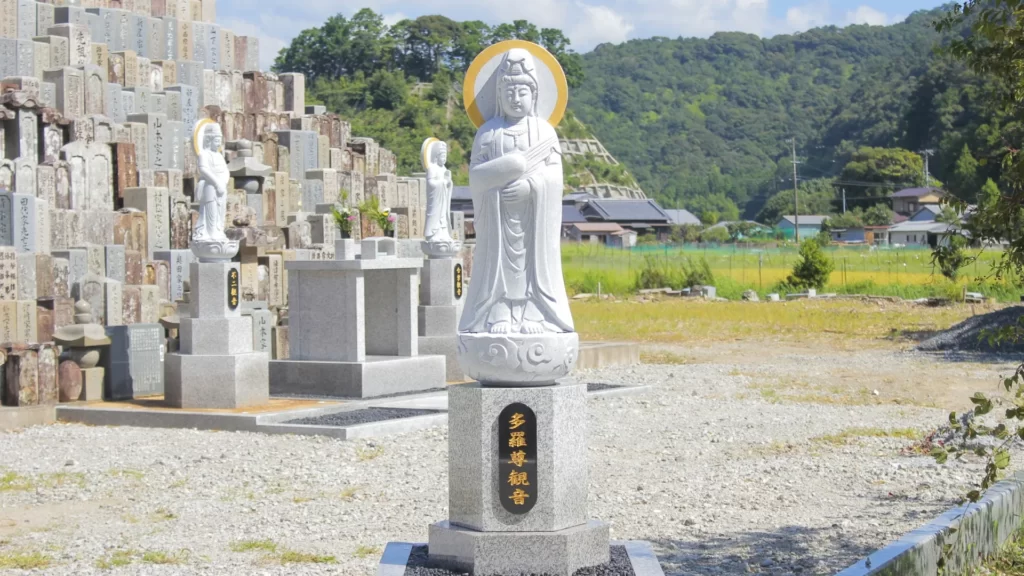
Funi Kannon
The term ‘Funi’ indicates that the compassionate form of Kannon and the wrathful form of Nio are not separate entities, but represent the same Buddha deity. This principle guides us towards a state of absolute equality.

Gasho Kannon
It represents the highest state of being, where one prays with a mind free from all thoughts and attachments. Before we worship Kannon, the Gassho Kannon prays for us to attain enlightenment.
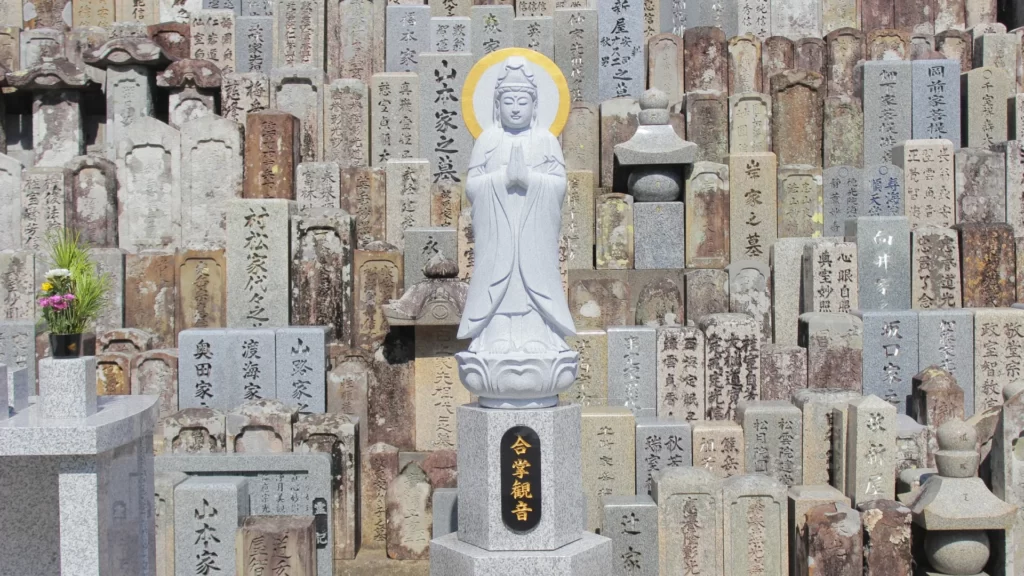
A grave for the repose of children’s souls.
Located on the left side of Sakurayuen.
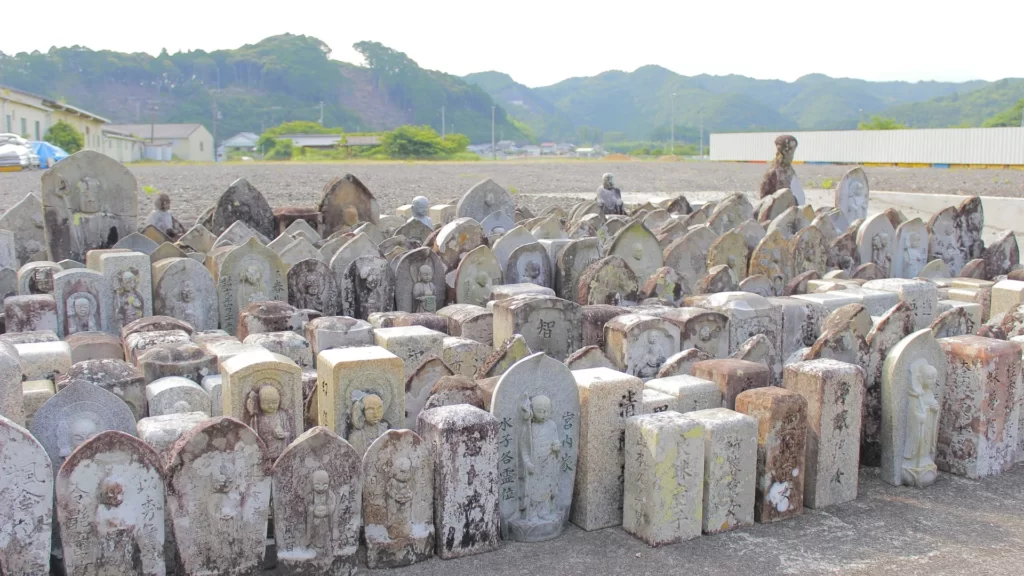
What should I do when I visit “Sakuraen”?
We encourage you to stand before the altar, join your hands in prayer, and close your eyes. It might be a good moment to make a wish.
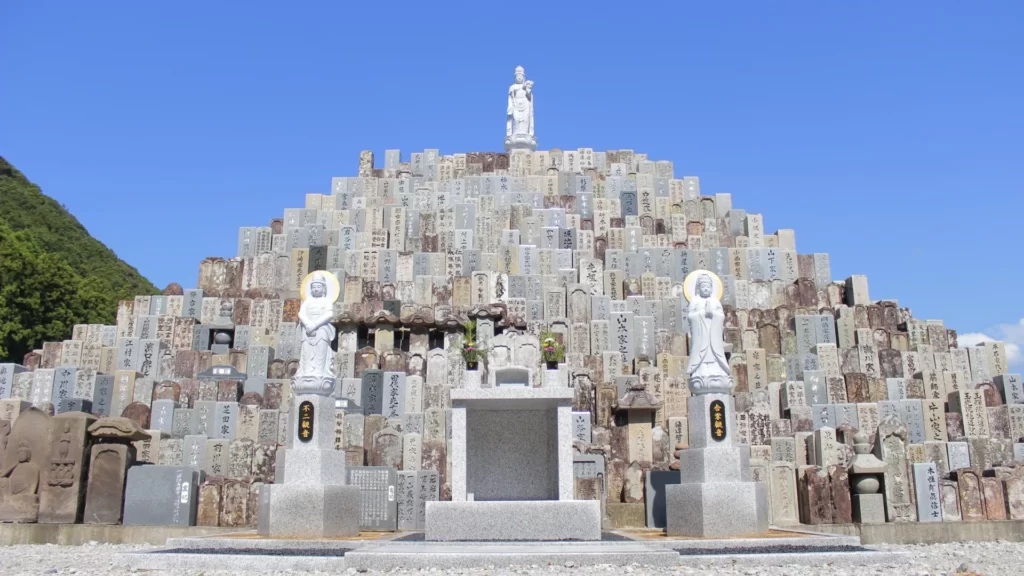
The Future of Sakuraen
Construction plan.
At Sakuraen, we are planning to construct a new Buddha stone (Hotokeishi) memorial tower adjacent to and behind the current memorial area.
The planned location for the second construction.
The construction is planned on the right side of the first memorial tower.
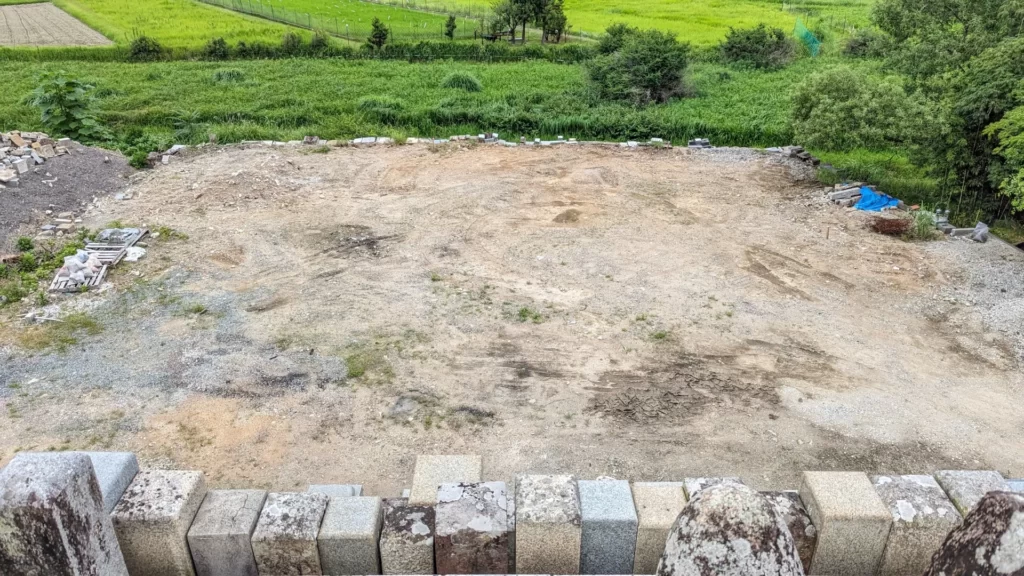
The planned location for the third construction.
The construction is planned at the rear of the first memorial tower.

What we want to convey to our customers
Our passion for Sakuraen.
Our hope is that many will visit Sakuraen, ensuring that the memorial tower remains vibrant and not lonely. If you’re inclined, we would appreciate if you could share your thoughts and experiences as a review. We are constantly striving to improve and aim to create an even more comfortable space for all our visitors.
There is no admission fee or restrictions at Sakuraen. Please feel free to visit us. We would be truly grateful if you could pay your respects in a quiet manner.
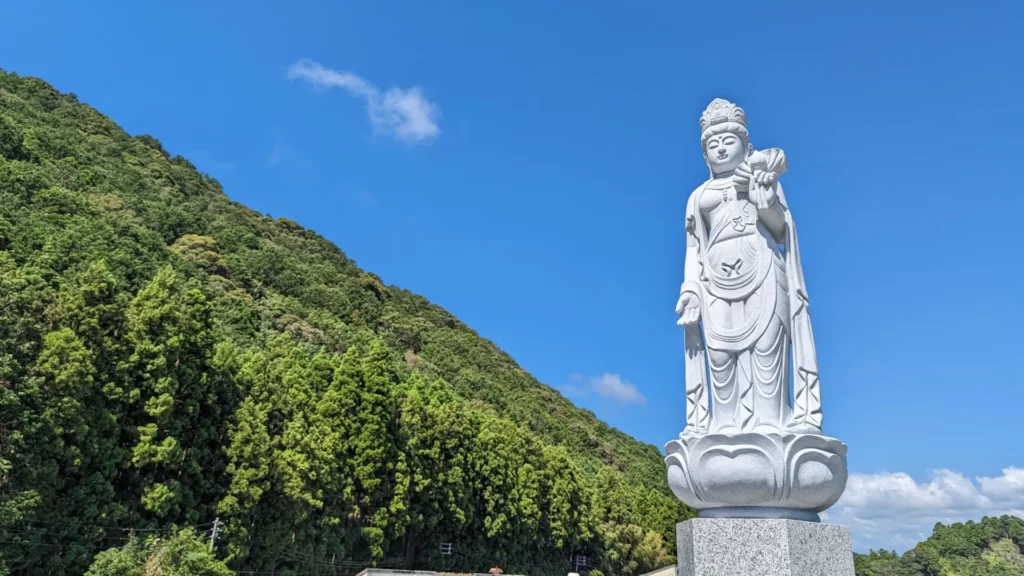
Google Map
Sakuraen is located in Shimowada, Nachikatsuura Town, Wakayama Prefecture.
(kishuu,kii,kinan,kumano)

